Data consistency check
I have taken our elastic data and compared them among each other. I plotted
scattering angle, where I weighted each set with its relative elastic
cross-section, calculated at the center of the acceptance. The 2GeV
data at different angles are consistent, while we get too much 1GeV data
and too little 3GeV data.
01.) 
MCEEP simulation:
I am still working on the comparison of the simulation for H(e,e')p
to the data. I still have some problems. However, I have found the missing
factor 2. The problem was in the calculation of the density, which is then used
for the Luminosity calculation. I learned that I need to be consistent and
use the atomic Hydrogen mass (M = 1g/mol) not molecular mass (M = 2g/mol). What
I did is use atomic mass for Luminosity calculation and molecular mass
for density calculation. Solving this problem has brought me closer
to the real cross-section.
I am now properly considering dead time, charge and PS factors. What I now see
is reasonable (10 - 30%) agreement between the theory and the data. At this point
I believe, that my main problem are the radiative and other losses, which
simulation does not consider properly.
To get better agreement between the simulation and the data, I also had to
adjust the spectrometer acceptances.
02.)  03.)
03.)  04.)
04.) 
Run #3265 - singles (Difference is approx 10%)
05.) 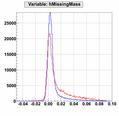 06.)
06.) 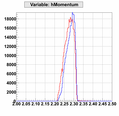 07.)
07.)  08.)
08.) 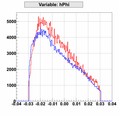
09.)  10.)
10.)  11.)
11.) 
Run #2814 - singles with MissingMass cut
When comparing 14.5deg run #2814 to the simulation, I get 30% difference
in the number of counts. However, when making a cut on missing mass peak - to remove
radiation tails - I get much better agreement (10%).
12.)  13.)
13.)  14.)
14.) 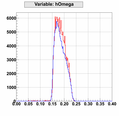 15.)
15.) 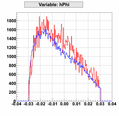
16.)  17.)
17.)  18.)
18.) 
Run #3265 - coincidence events (Difference is approx 7%)
To get this results I had to modify the BigBite spectrometer acceptance. I reduced the BigBite phi acceptace
to 1/2 of its original. Also, I had to do cuts on TgTh, because in real data, the acceptance is reduced on the
upper edge.
19.)  20.)
20.)  21.)
21.) 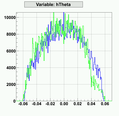
22.)  23.)
23.)  24.)
24.)  25.)
25.) 
26.)  27.)
27.)  28.)
28.)  29.)
29.) 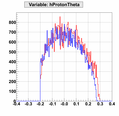
30.)  31.)
31.)  32.)
32.) 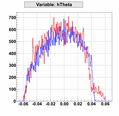
Carbon data:
I have inspected our 12C elastic data at 1GeV. We see any elastic peak. The most prominent is the 4.4MeV excited state:
33.)  34.)
34.) 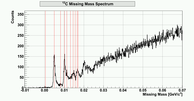
Last modified: 01/30/13

 03.)
03.)  04.)
04.) 
 06.)
06.)  07.)
07.)  08.)
08.) 
 10.)
10.)  11.)
11.) 
 13.)
13.)  14.)
14.)  15.)
15.) 
 17.)
17.)  18.)
18.) 
 20.)
20.)  21.)
21.) 
 23.)
23.)  24.)
24.)  25.)
25.) 
 27.)
27.)  28.)
28.)  29.)
29.) 
 31.)
31.)  32.)
32.) 
 34.)
34.) 